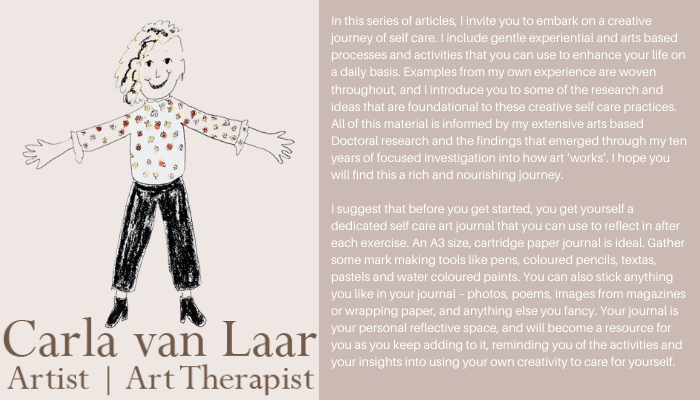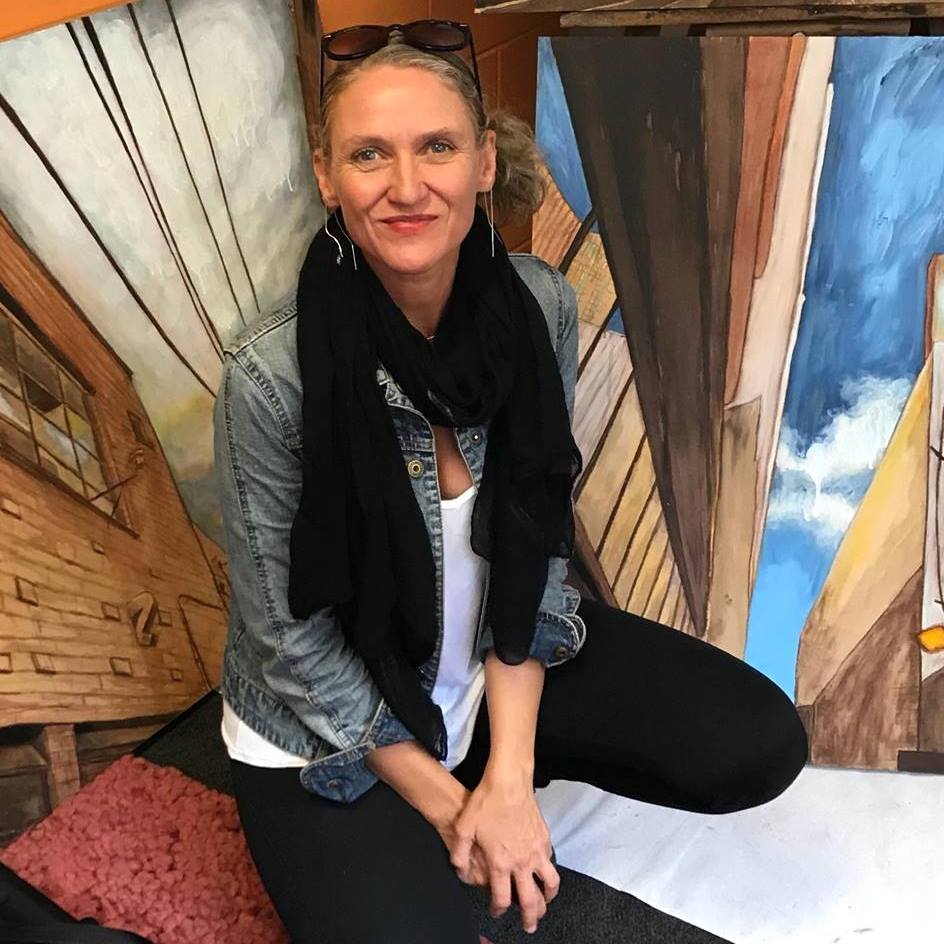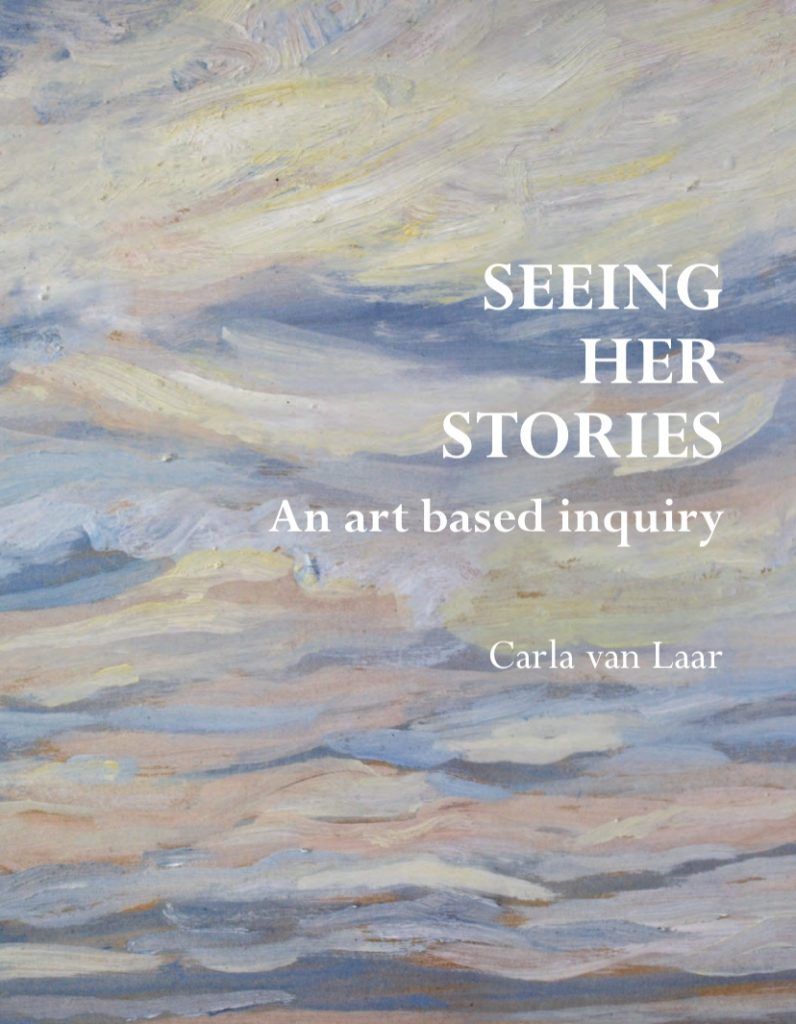With Dr Carla van Laar AThR
Feature image credit Carla van Laar
In this article I share some insights from my Doctoral research about bringing things forward as an act of self-continuity. I invite you to engage in a creative and reflective process about your own journey so far, and what you your self would like to bring forward in your life.

What am I bringing forward?
In this excerpt from my book “Seeing Her Stories”, I describe how I investigated continuity and change through my arts based Doctoral research:
Polkinghorne (1988) considers our storying and narratives as “the primary form by which human experience is made meaningful” (p. 1). He implies the importance of continuity as inherent to our narrative meaning making, because when we engage in these activities, we organise our “human experiences into temporally meaningful episodes” (Polkinghorne, 1988, p. 1). Stern (2004) elaborates on how even within present moment experiencing micro-narratives are at play. He suggests that when we become alert to a present moment occurring this is because it holds a story-line of significance or novelty. Stern (2004) describes how we weave together the micro-narratives of present moments to create the stories of our lives, and that in any moment of present experience it is possible to create not only the present, but also to re-create our storied past. The accounts from participants in this research project demonstrate how in seeing her stories, we engaged in processes of organising our lived experiencing into macro narratives and micro narratives through which we became aware of aspects of our transpersonal continuity and our self-continuity.
… meaningful narratives provide us with coherency that is helpful as we adapt to continuous changes in our internal and external worlds.
The idea of self-continuity – “a sense of connection between one’s past and one’s present (Parfit, 1971; Vignoles, 2011)”, (Sedikides, Wildschut, Routledge & Arndt, 2015, p. 52) has been described as “positively related to psychological well-being (McAdams, Reynolds, Lewis, Patten, & Bowman, 2001), psychological equanimity (Landau, Greenberg, & Solomon, 2008), and even physical health (Anderzén & Arnetz, 1999)”, (Sedikides et al., 2015, p. 52). Researchers fascinated with self-continuity have focused their attention on nostalgia, linking nostalgic experiencing with psychological health, optimism, memory, affect, drive and creativity (Cheung et al., 2013; Routledge, Wildschut, Sedikides & Juhl, 2013; Sedikides, Wildschut, Routledge, Ardnt, Hepper & Zhou, 2015; van Tilburg, Sedikides & Wildschut, 2015). The accounts from myself and participants in this inquiry support the idea that seeing art works can be a way of evoking nostalgic experiencing and nurturing self-continuity.
Conceiving of art works as stories, as I have done in this inquiry, and listening carefully to the accounts of seeing her stories experiences from the participants, enables an intersubjective perspective of what can happen when a woman’s stories are seen. Participants have reported experiencing strong and moving present moment experiences in seeing the artworks, and the feeling of “being met” by the image, in ways that are resonant with Stern’s (2004) descriptions of “intersubjective consciousness” (p. 125) that can occur when two or more people share a present moment. The stories shared by participants in this inquiry illustrate how, in reflecting together on their remembered seeing experiences, we co-created new intersubjective present moments, changed our relationships with the past, and storied new possibilities for the future.
Rather than emphasising observable or measurable changes, the stories told by myself and the participants recount our experiences of changes in our relationship with change, changes in processes of making, perception of and feeling responses to artworks, noticing how we encounter changes in the artwork itself, noticing how reflecting on our seeing experiences can change perspectives in our broader life, and being aware of changes in ourselves. These lived stories of change are resonant with being mindfully accepting of and present with change, in contrast to seeking, pursuing or intentionally facilitating change.”
(van Laar 2020)
The Process
I would like to invite you to take a walk along a path, or a drive along a road.
Notice what it is like to moving along this path or road.
Really feel it stretching away behind you, at your back.
Notice it unfolding out in front of you, into the future.
You have already travelled a lot in your life time so far leading up to this moment.
There are lots of wonderful qualities you have that have kept you going so far.
Take a moment to reflect on all the qualities in side yourself that have got you as far as you have come today. Qualities like perseverance, hope, and courage. Even if you don’t usually recognise these qualities in yourself, take a moment to recognise them today. You would not have got this far without these qualities.
At some point, during your travels along the path or road, pay attention to what you see ahead of you.
What do you want to bring forward with you into the rest of this journey?
What would you like to continue?
When you return home, make an art work about the path or road you are travelling.
Reflective Journalling
Use your journal to write about these questions:
- What are the qualities that have helped me get this far through my journey?
- What do I want to bring forward?
- What do I choose to continue?
…
References
van Laar, C. Seeing Her Stories. Carlavanlaar.com, Brunswick, Australia.

Dr Carla van Laar
Artist | Art Therapist
Master of Creative Arts Therapy
Doctor of Therapeutic Arts Practice
Registered Supervisor and Professional Member ANZACATA
Carla van Laar is a painter and therapeutic arts practitioner from Australia. Born in Brisbane, Carla is first generation Australian on her Dutch grandparents side, and 7th generation through her maternal bloodline who were mostly English and came to Australia in the early colonisation of the 1800s. Carla currently lives and works in Victoria, residing between Wurrundjeri country in Melbourne, and Boon Wurrung country in Inverloch, paying deep respects to the First Peoples of the Kulin Nations whose land was never ceded and will always be Aboriginal land. Identifying as a cisgender woman, Carla is passionately disinterested in socially constructed identities that disempower anyone. Carla has over 25 years’ experience working with people and the arts for health and well-being in community organisations, justice, health and education contexts.
Carla’s first book “Bereaved Mother’s Heart” was published in 2007 and broke social taboos about maternal grief. From 2008-18 she established and ran an independent art therapy studio and gallery in Melbourne. Her Doctoral research “Seeing Her Stories” continues the mission to make women’s stories visible, through art.
Carla has lectured and supervised Art Therapy students at RMIT, MIECAT and currently the IKON Institute. She is a practicing artist and in 2018 received an Artist Fellowship at RMIT’s creative research lab, “Creative Agency”. She insists on being part of a creative revolution in which art re-embodies lived experience, brings us to our senses, makes us aware of the interconnectedness of all life and is an agent of social change.
Carla’s new book “Seeing her stories” presents her research into making unseen stories visible through art, and is available to read for free online here or purchase a hard copy of the full colour hard cover coffee table book here.



Leave a Reply